
The Krishna River has been the focus of several significant projects aimed at harnessing its water resources for irrigation, power generation, and overall development. Here are some major Krishna River projects associated with:
Srisailam Dam:
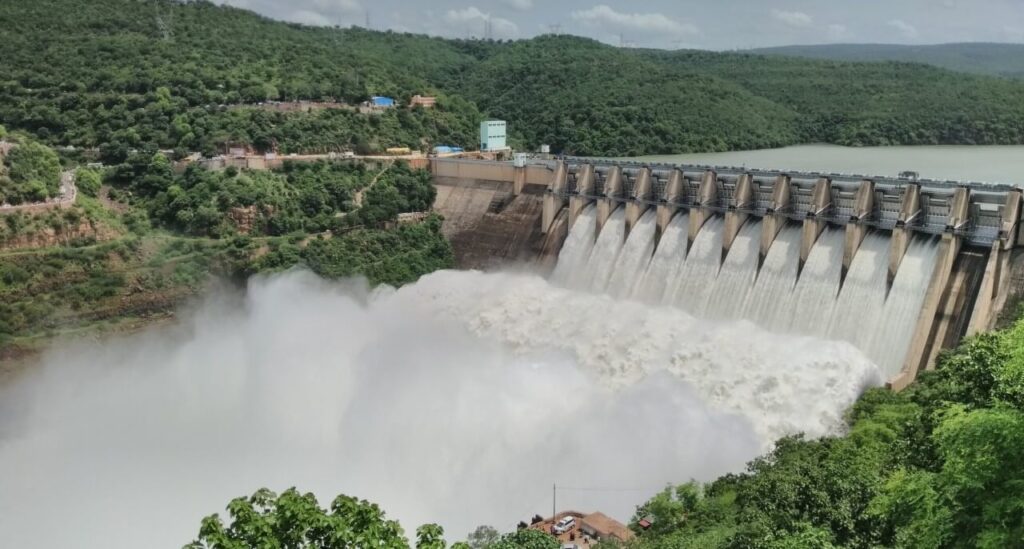
- Located in Andhra Pradesh, the Srisailam Dam is a multipurpose project built across the Krishna River.
- It serves as a hydroelectric power station and provides water for irrigation in both Andhra Pradesh and Telangana.
- The dam’s reservoir also supports the Nagarjuna Sagar Dam downstream.
Nagarjuna Sagar Dam:
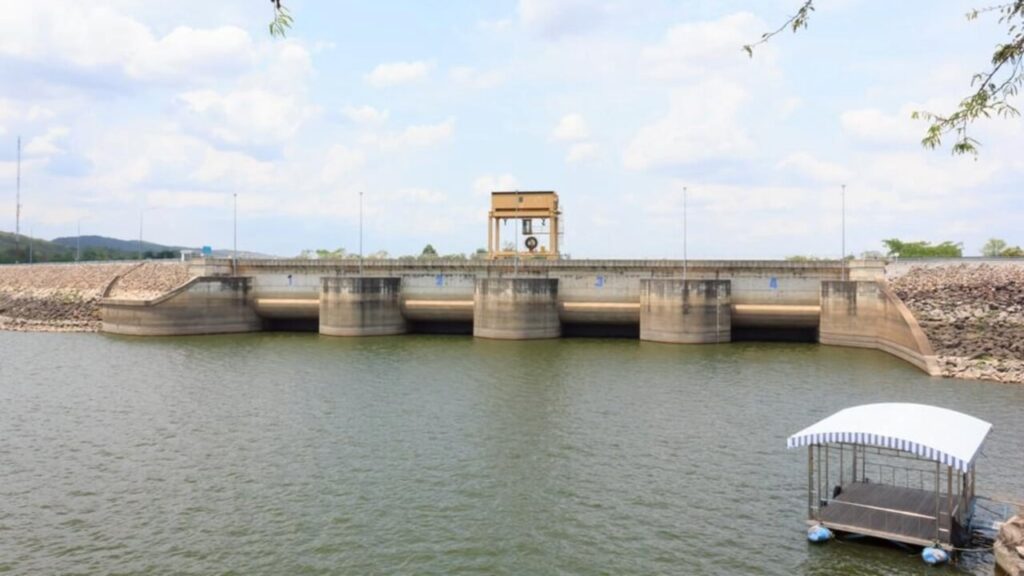
- This dam is one of the largest masonry dams in the world and is situated on the Krishna River between Telangana and Andhra Pradesh.
- It primarily serves for irrigation, providing water to vast agricultural areas in both states.
- The dam also generates hydroelectric power.
Pulichintala Project:
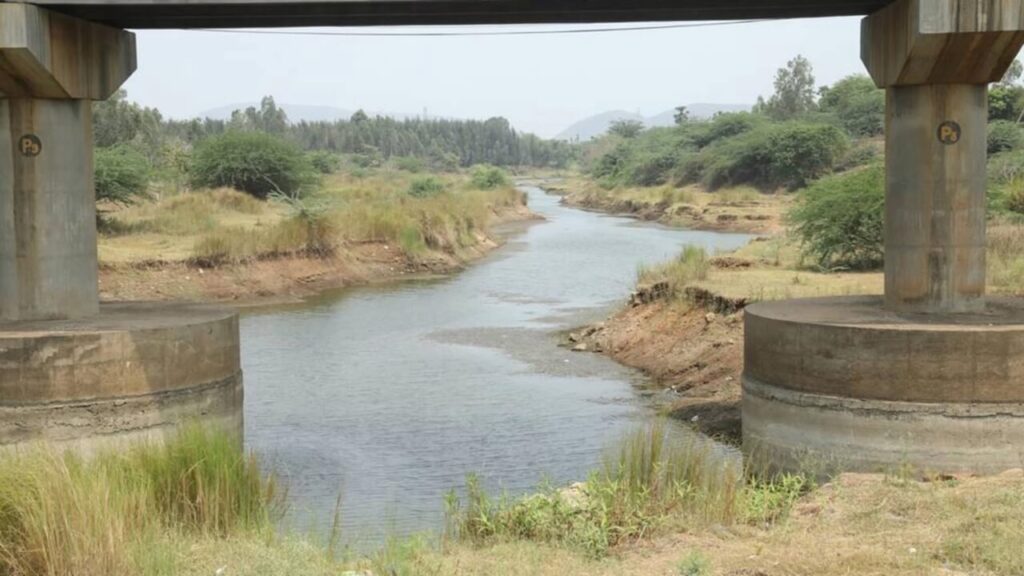
- Located in Andhra Pradesh, the Pulichintala Project is a lift irrigation scheme on the Krishna River.
- It aims to provide water to upland areas for cultivation.
- The project also generates hydropower.
Prakasam Barrage:
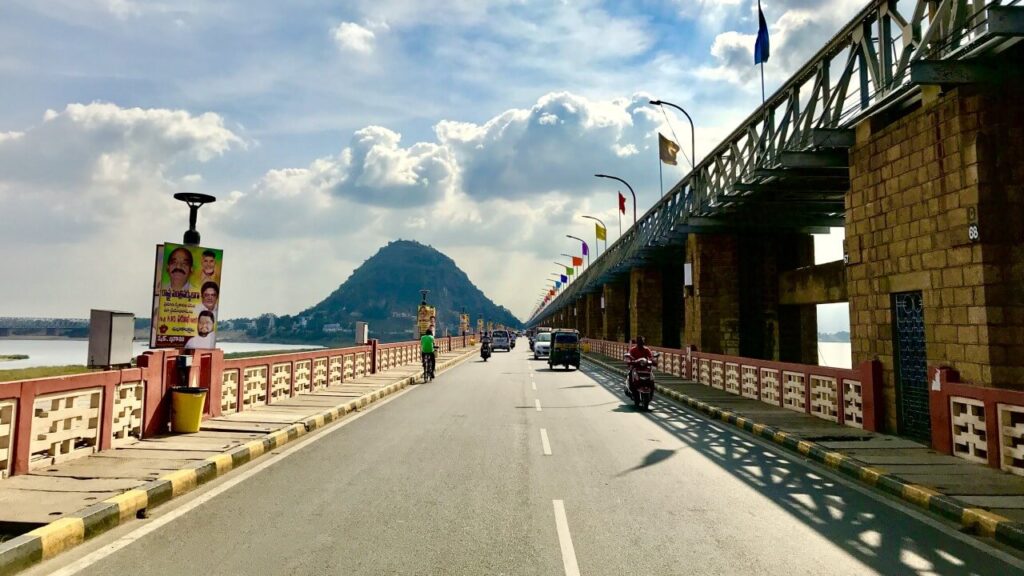
- Situated in Vijayawada, Andhra Pradesh, the Prakasam Barrage is a regulator-cum-road bridge across the Krishna River.
- It helps control the flow of water and provides a vital link between the city and the Krishna delta.
Almatti Dam (Lal Bahadur Shastri Dam):
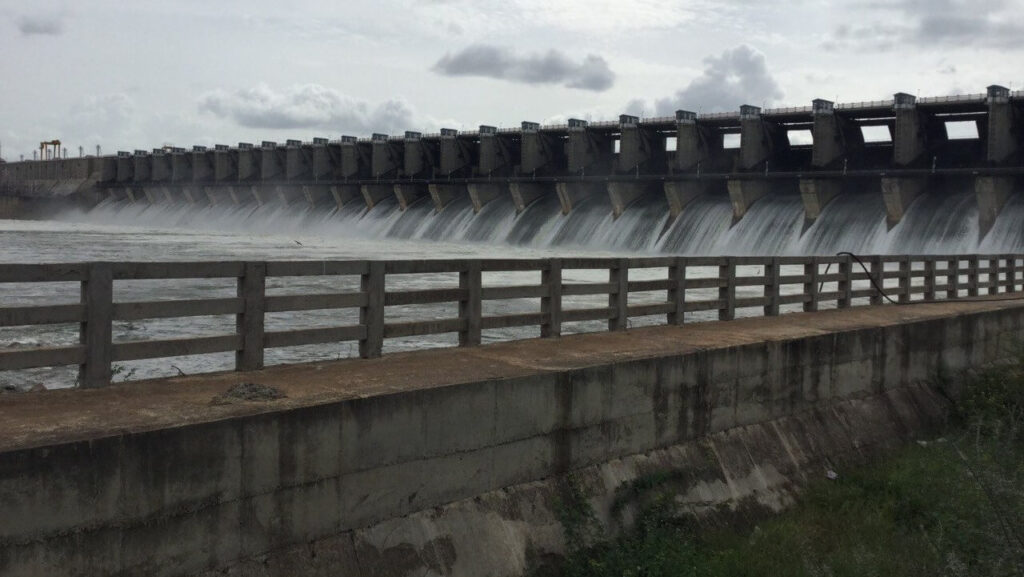
- Located in Karnataka, the Almatti Dam is constructed on the Krishna River.
- It serves for irrigation, hydropower generation, and flood control.
- The dam’s reservoir extends into Maharashtra as well.
Tungabhadra Dam:

- Although not directly on the Krishna River, the Tungabhadra Dam is a joint project between Andhra Pradesh and Karnataka.
- It regulates the flow of the Tungabhadra River, a major tributary of the Krishna.
- The dam provides water for irrigation and hydropower generation.
These projects play a crucial role in water management, agriculture, and economic development in the Krishna River basin. However, disputes over water allocation and equitable sharing continue to challenge their effective implementation .
How do these projects impact downstream regions?
The impact of these water projects on downstream regions is multifaceted. Let’s explore the effects:
Water Availability:
- Downstream regions heavily rely on the Krishna River for irrigation, drinking water, and other purposes.
- Water diversion for upstream projects can reduce the flow downstream, affecting agriculture and livelihoods.
Ecological Balance:
- Altered river flow due to dams and barrages disrupts the natural ecosystem.
- Reduced water flow affects aquatic life, wetlands, and biodiversity downstream.
Flood Control:
- Dams help regulate river flow, preventing sudden floods downstream.
- However, controlled releases can also impact downstream areas during dry spells.
Silt Accumulation:
- Dams trap sediment, reducing silt downstream.
- This affects soil fertility and sediment transport, impacting delta regions.
Saltwater Intrusion:
- Reduced freshwater flow can lead to seawater intrusion in coastal areas.
- Saltwater damages crops and groundwater quality.
Hydropower Generation:
- Dams generate electricity, benefiting both upstream and downstream regions.
- However, altered river flow affects downstream ecosystems.
Displacement and Rehabilitation:
- Reservoir creation displaces communities downstream.
- Proper rehabilitation measures are essential to mitigate social impacts.
Water Sharing Disputes:
- Conflicts over water allocation impact downstream states.
- Equitable sharing is crucial for sustainable development.
While these projects offer benefits, balancing upstream development with downstream needs remains a challenge .
How do these projects affect delta regions?
The impact of these water projects on delta regions is significant and multifaceted. Let’s explore how these projects affect the delicate balance of delta ecosystems:
Reduced Sediment Flow:
- Dams and barrages trap sediment carried by rivers.
- In delta regions, sediment deposition is essential for maintaining land elevation and preventing subsidence.
- Reduced sediment flow can lead to land subsidence, making the delta more vulnerable to sea-level rise.
Saltwater Intrusion:
- Dams alter freshwater flow, affecting the balance between freshwater and saltwater.
- Reduced freshwater reaching the delta allows seawater to intrude inland.
- Saltwater intrusion harms agriculture, groundwater quality, and ecosystems.
Ecological Disruption:
- Deltas are rich in biodiversity, hosting unique flora and fauna.
- Altered river flow impacts wetlands, mangroves, and estuaries.
- Species that rely on specific salinity levels suffer due to changes in water composition.
Agriculture and Livelihoods:
- Deltas support agriculture, fisheries, and aquaculture.
- Reduced water availability affects crop cultivation and livelihoods of delta communities.
- Salinization of soil due to seawater intrusion further exacerbates agricultural challenges.
Erosion and Land Loss:
- Dams alter sediment transport downstream.
- Reduced sediment deposition leads to erosion of delta land.
- Coastal erosion threatens settlements and infrastructure.
Hydrological Changes:
- Dams regulate river flow, affecting seasonal flooding.
- Natural flood cycles are essential for nutrient replenishment and maintaining delta ecosystems.
- Altered flow disrupts these cycles.
Human Settlements and Infrastructure:
- Deltas are densely populated and host major cities.
- Altered river flow impacts water supply, sanitation, and flood risk management.
- Infrastructure (such as ports and roads) faces challenges due to land subsidence and erosion.
Adaptation Strategies:
- Sustainable water management, sediment release, and controlled freshwater flow are crucial.
- Ecosystem-based approaches, such as mangrove restoration, can mitigate impacts.
- Integrated planning considering ecological, social, and economic aspects is essential.
Balancing water utilization for development while safeguarding delta ecosystems requires thoughtful policies and collaborative efforts across states and regions.



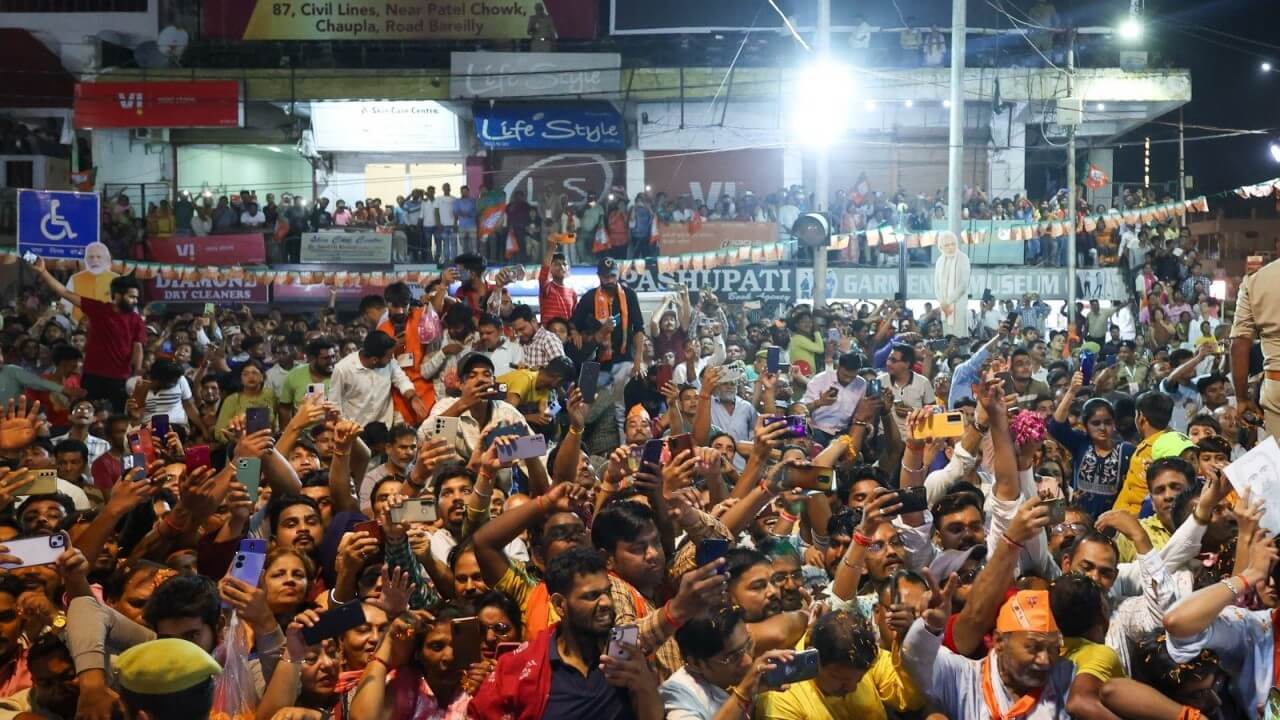
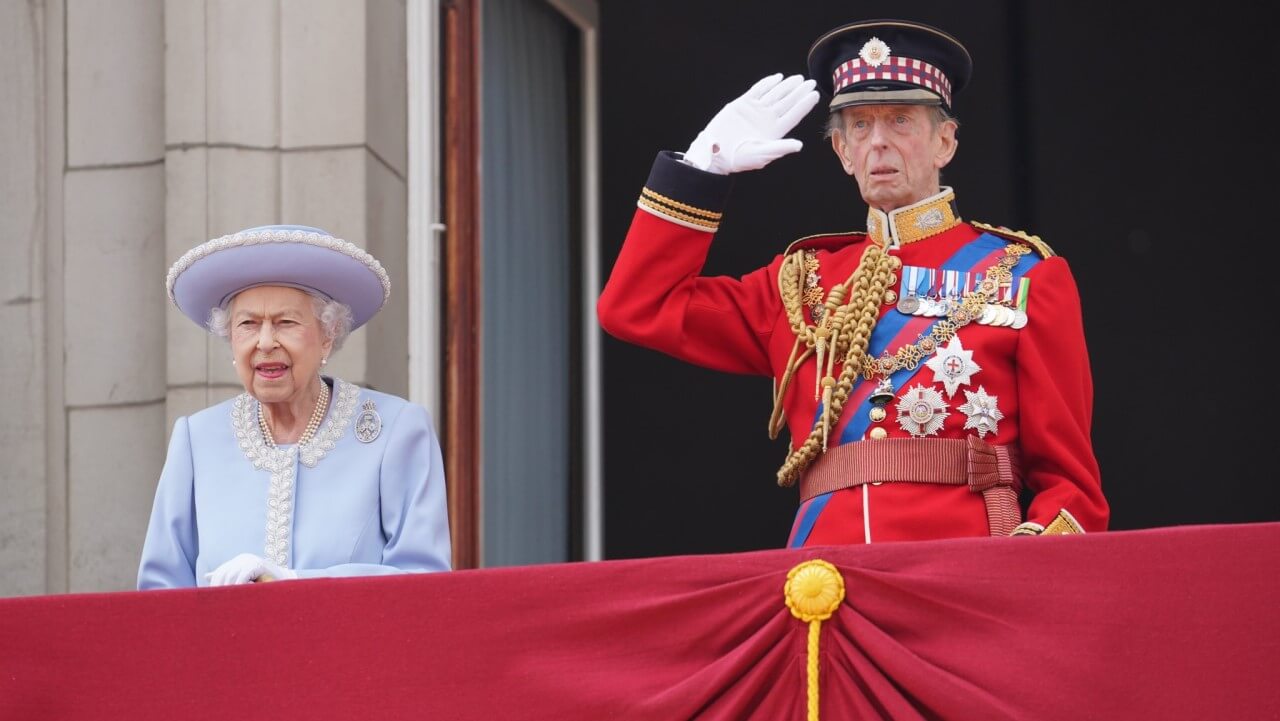














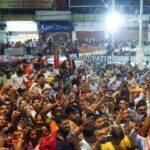







What’s up colleagues, its great piece of writing regarding tutoringand entirely explained, keep it up all the time.
whoah this blog is magnificent i love reading your posts. Keep up the great work! You know, a lot of people are hunting around for this info, you could aid them greatly.
Very clear internet site, thanks for this post.
whoah this blog is magnificent i really like studying your articles. Keep up the great work! You understand, many persons are hunting around for this information, you could help them greatly.
I reckon something truly special in this website .
I went over this website and I think you have a lot of superb information, bookmarked (:.
After research a couple of of the weblog posts on your website now, and I truly like your manner of blogging. I bookmarked it to my bookmark web site listing and shall be checking again soon. Pls take a look at my site as effectively and let me know what you think.
Hello very nice site!! Guy .. Beautiful .. Superb .. I will bookmark your blog and take the feeds additionally…I am happy to seek out a lot of helpful info here in the put up, we need work out extra strategies in this regard, thank you for sharing.
I have been browsing online more than 3 hours these days, yet I by no means discovered any fascinating article like yours. It is pretty worth enough for me. In my opinion, if all web owners and bloggers made excellent content material as you did, the web will probably be much more helpful than ever before.
Glad to be one of several visitors on this awe inspiring website : D.
Your style is so unique compared to many other people. Thank you for publishing when you have the opportunity,Guess I will just make this bookmarked.2
Some genuinely interesting points you have written.Aided me a lot, just what I was searching for : D.
Generally I don’t learn article on blogs, but I wish to say that this write-up very pressured me to take a look at and do so! Your writing style has been amazed me. Thank you, very nice post.